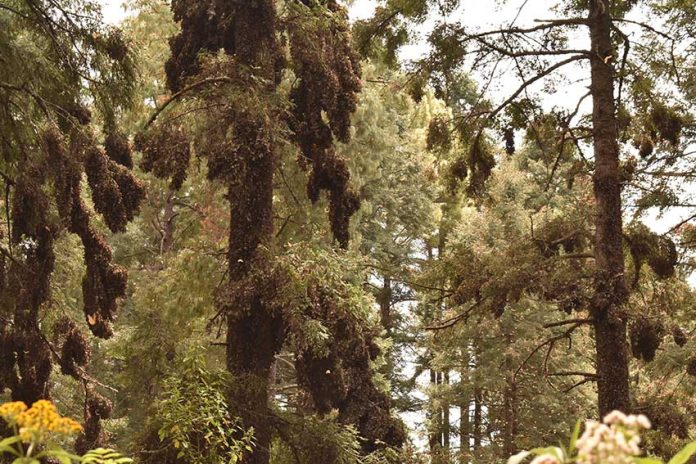It had been over eight years since I last visited the El Rosario butterfly sanctuary located near the community of Ocampo, Michoacán, so I decided it would be interesting to revisit the area after hearing several conflicting reports regarding this year’s migration.
Some friends said the trek was disappointing (strange given that the number of monarchs this year was up by 144%) while others I knew raved about the experience.
What I do remember of my first visit was that the climb to the top was long and arduous and took my late husband and I over an hour to do. At the top of the hill there was a single rope, guarded by locals at the entrance so that you did not step over into the sanctuary.
We were instructed to lower our voices in order not to disturb the colony of what seemed like billions of butterflies within arm’s reach. The magical sight of the monarchs rising in the air when the sun peeked from behind the clouds was indescribable, and I remember vividly the sensation of them landing on us.
Fast forward many years later to an overnight stay in Morelia and a four-hour drive to El Rosario the next morning. On the way our tour guide for our group of five explained some of the rules and regulations once in the sanctuary, the usual things such as keep your voice low, don’ t litter, stay on the path at all times and refrain from touching the butterflies, even those that were dead.
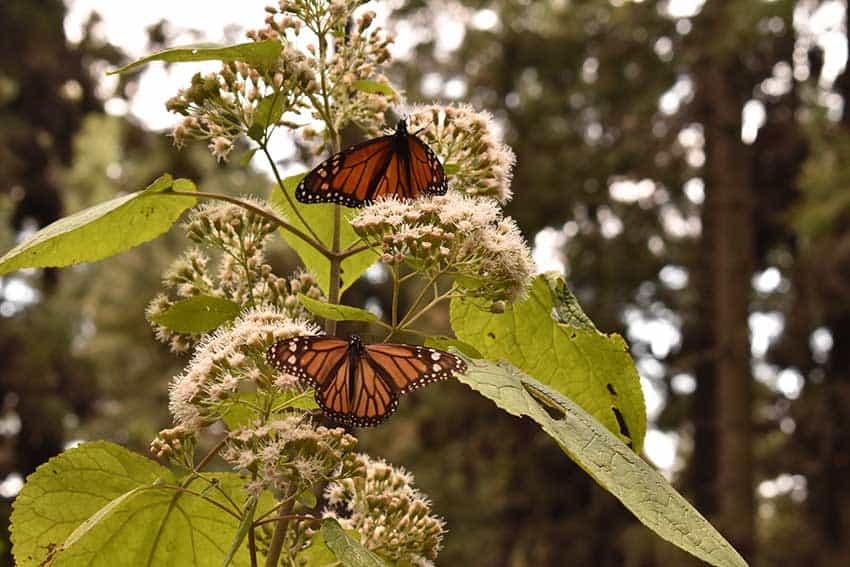
I was impressed by this because one of the many things I had heard about the sanctuary was that not enough care was being taken to guard the colony from the numerous tourists. It was encouraging to see that for this tour company at least, conservation was important.
Driving into the sanctuary, however, was much different from what I experienced before. For one thing, there were far more butterflies at lower altitudes than I remembered. In fact, I was concerned by the number that hit our minivan as we drove very slowly and carefully into the parking lot.
They swarmed the area as we walked to the entrance to pay our 50-peso fee. Nearby, mini-restaurants dotted the area off to one side. Gone, it seemed, were the charming restaurants and souvenir shops that once lined the pathway on the way up or down.
Whereas before our path was crude, the new one was mostly wooden stairs, with ropes along each side to help you along, and several benches on which to rest. The climb would take between 30 and 40 minutes, our guide said, (much less than I remembered) but this time around I chose to go by horseback.
It was an easy switchback climb for the horses, and with the guide running (yes, running) beside my horse, we made it to the top in seven minutes! Even as an experienced rider, I was taken aback by how close it was. Another short walk from where I dismounted, and I was there.
Was I disappointed? Yes and no. Yes, I could easily see the magnificent clumps of butterflies from the path and when the sun came out millions of monarchs rose in the air. No, they did not land on me, which is of course a good thing as human contact is not to be encouraged. But I enjoyed the spectacle for quite some time before heading down.
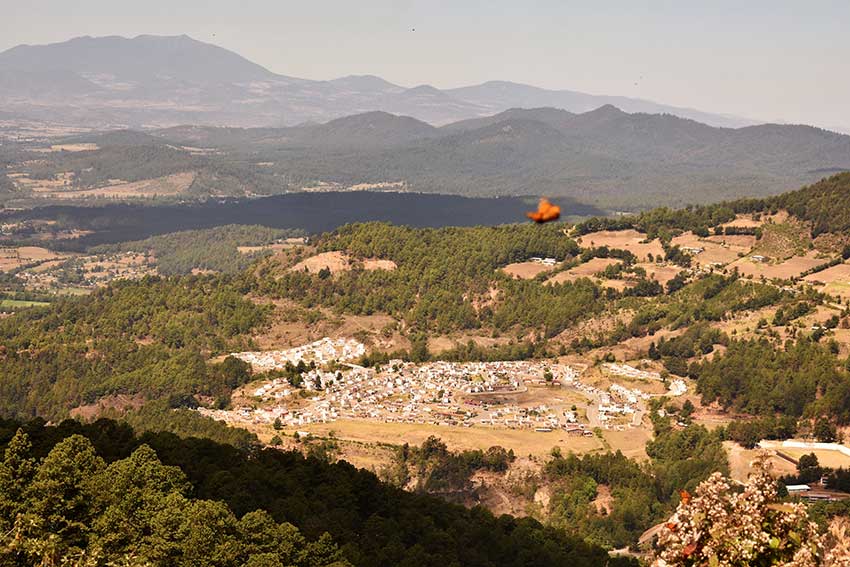
I was surprised to see numerous mounds of dead butterflies on and around both sides of the path. Coupled with the inordinate number of butterflies in the lower elevations, I decided to investigate the cause.
Moisés Acosta first came to Michoacán as a young man after studying tourism in Mulegé, Baja California Sur. Although not a biologist or an expert in zoology and botany, he somehow landed a position at the Monarch Butterfly Biosphere Reserve office due in part of his knowledge in tourism.
Here he dedicated himself to educating people about the dangers facing the monarch population. But he was often discouraged by visitors who disobeyed clear directions not to enter the areas of the colony that were cordoned off.
The complete disregard as to what was needed to protect the monarchs from extinction caused him to reach out to scientists and biologists in the Americas, where he garnered support from non-governmental agencies who have been able to pressure the government of Mexico.
He then decided to build his own butterfly farm, Papalotzin, for educational purposes.
But Acosta suffered many trials when launching the project in Zitácuaro, Michoacán. At one point his sanctuary was burned out. Although nothing was proven, cans of gasoline — suggesting arson — were left at the site.
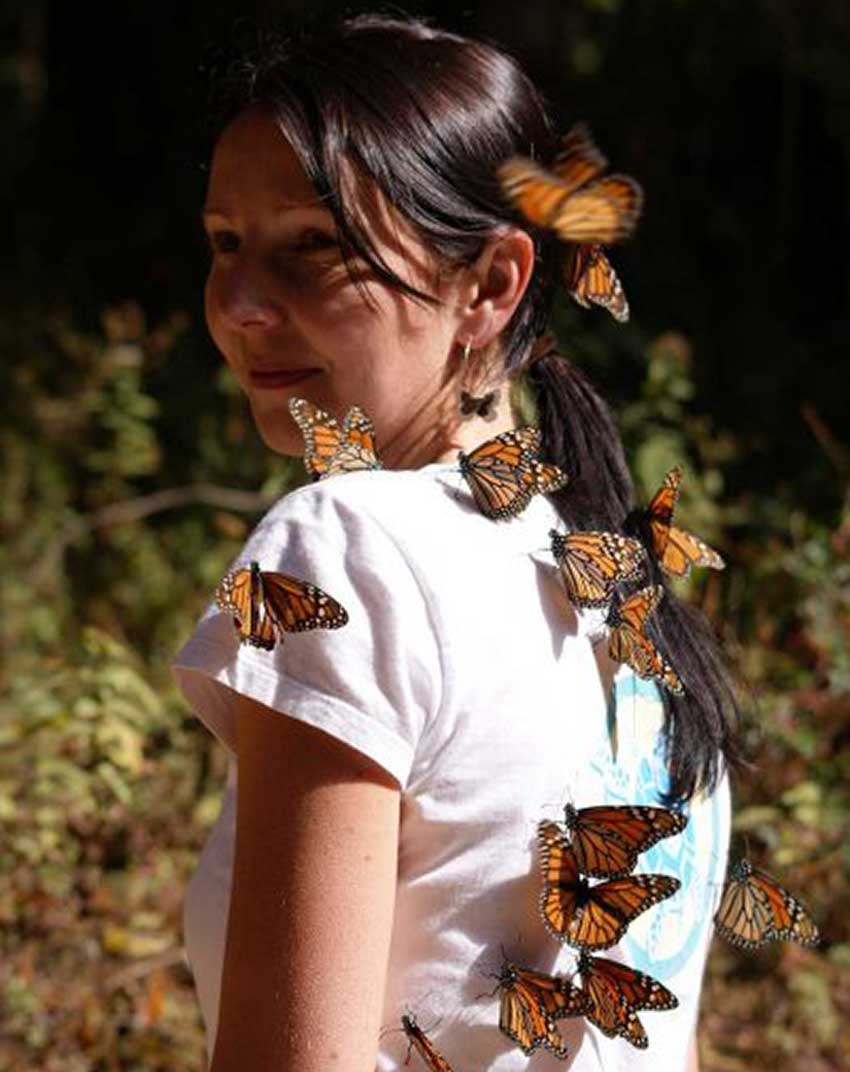
The fire occurred right after Acosta contacted authorities about illegal logging in the Sierra Chincua sanctuary in 2015, in which 10 hectares of forest at the heart of the sanctuary were destroyed.
Back at El Rosario, the reason why more butterflies are being seen at lower elevations is due to the creation of artificial watering holes near the sanctuary entrance, Acosta says, explaining that the move attracted the monarchs and prompted them to form colonies too close to the entrance.
Many are now exposed to automobile fumes and human contact.
I also contacted a tour operator I met years before and he sent me to seek answers from a scientist who had much to say about the migration of the monarchs and the preservation of the species.
I learned that the preservation of the monarch butterflies is a project that should be shared equally by the United States, Canada and Mexico if the species and indeed all pollinators are to survive. The pressure to preserve the population is huge but the protection of reproductive habitat is the responsibility of the U.S. and Canada, said the scientist, who wished to remain anonymous.
What happens in the winter months is the responsibility of Mexico. “We need to work together and collaborate to protect the monarchs instead of blaming each other for the decline or danger that the butterflies are in.”
Canada and the U.S., particularly in the prairies and in large industrial agricultural areas, must decrease the amount of herbicides and pesticides they spray on their crops of corn and soy, and use more of the land to plant milkweed for the monarchs on their migration path, he said.
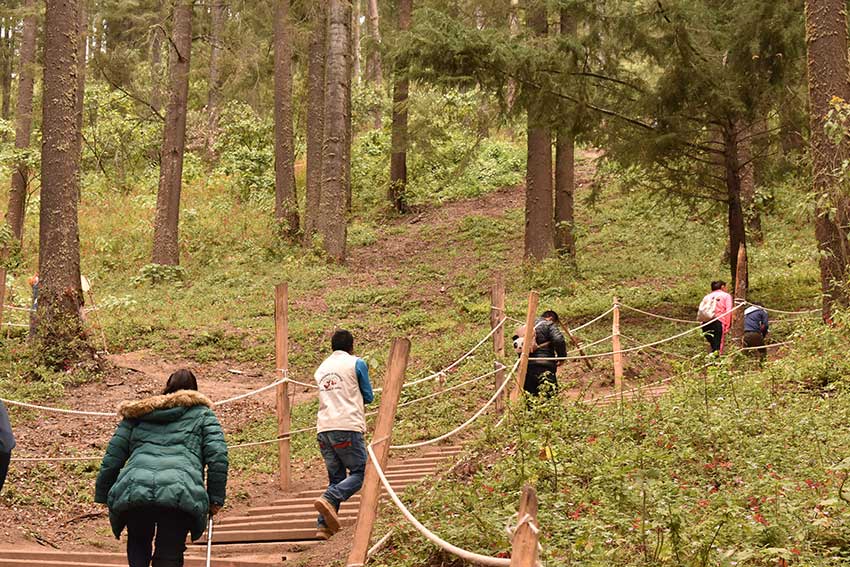
Another concern in Mexico are the logging practices of some of the locals. The trees that monarchs favor — and that are vital to their survival — have been subjected to “reforestation” practices by people who stand to gain financially from the effort.
The problem is the Oyamel tree does not do well when transplanted and it’s best if these ecosystems regenerate naturally. As well, the forest needs to be dense. Although it was necessary to clear some of the forest when a recent storm knocked down many of the trees, it is hard to say how many were knocked down and how many were cut.
As overwhelming as all the issues concerning the monarchs sounded, another source, scientist Pablo Jaramillo López, offered some suggestions as to how we can safeguard the future well-being of the monarchs:
1. Government, farmers and citizens need to work together to encourage the planting of local species of milkweed and other nectar flowers in their gardens and fields in the U.S. and Canada.
2. Stop logging practices that will hurt the migration of butterflies and discontinue pumping water into lower altitudes and away from where they would naturally form their colonies.
3. Encourage tourists to visit the sanctuaries between November and January instead of cramming all tours into February and March, thereby decreasing the human impact on the species.
4. Education as to how to behave at the sanctuary.
5. Although there are five sanctuaries in Mexico open to the public now, there are other areas that are not. These should remain so.
The writer is a Canadian who has lived and worked in Mexico for many years.
